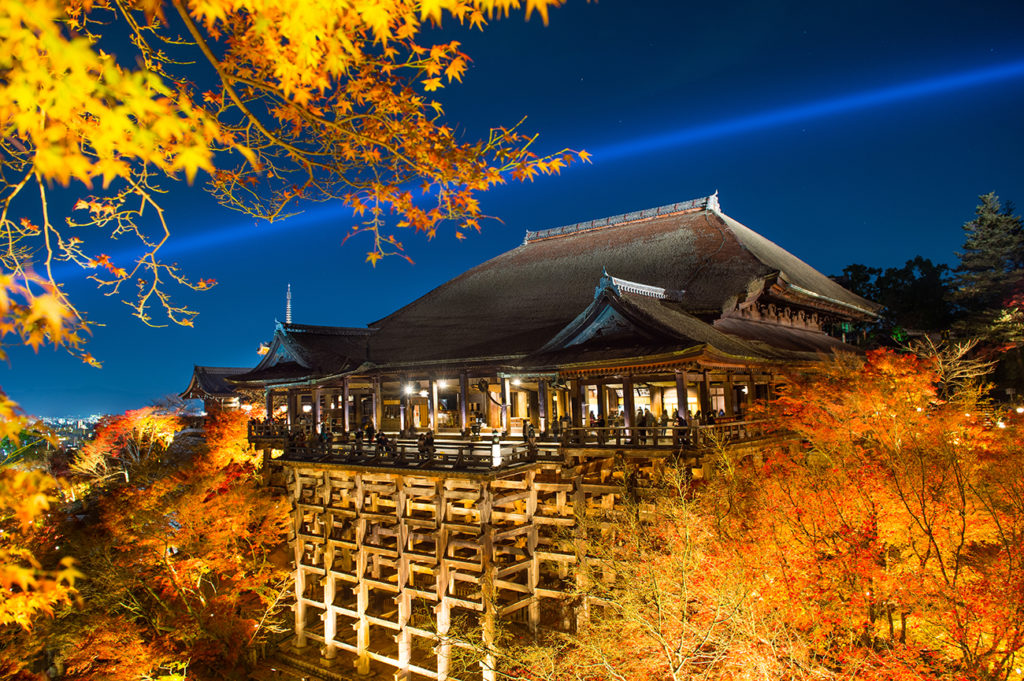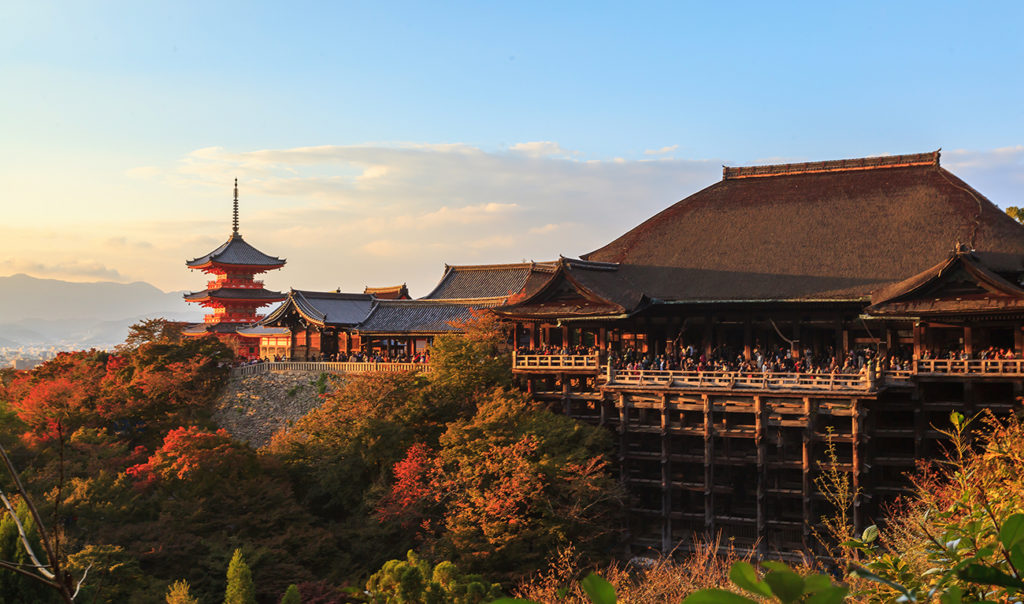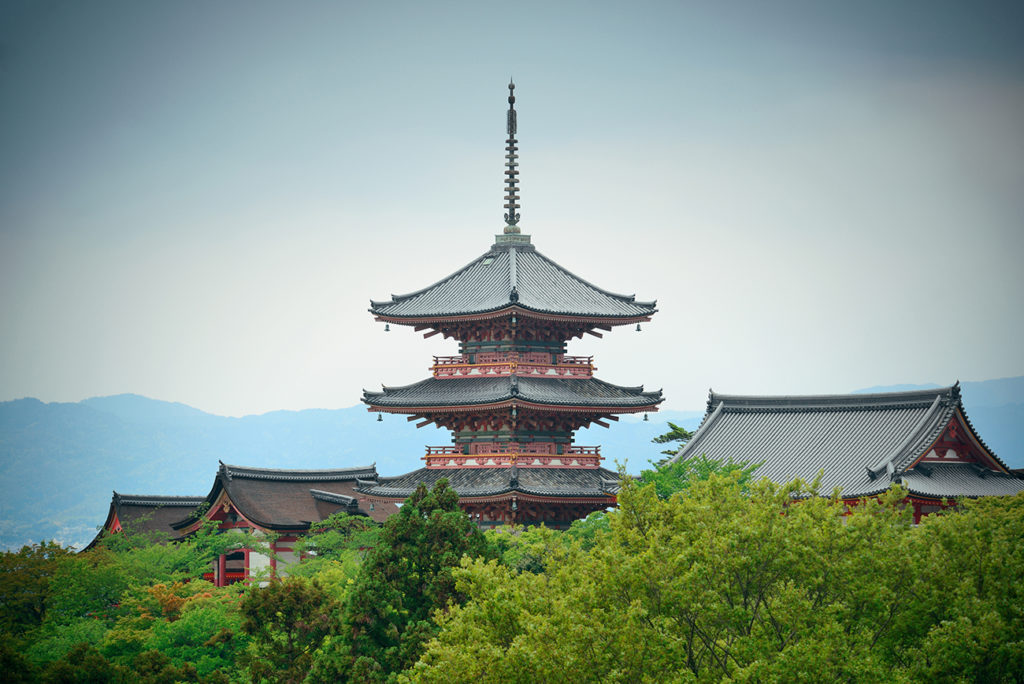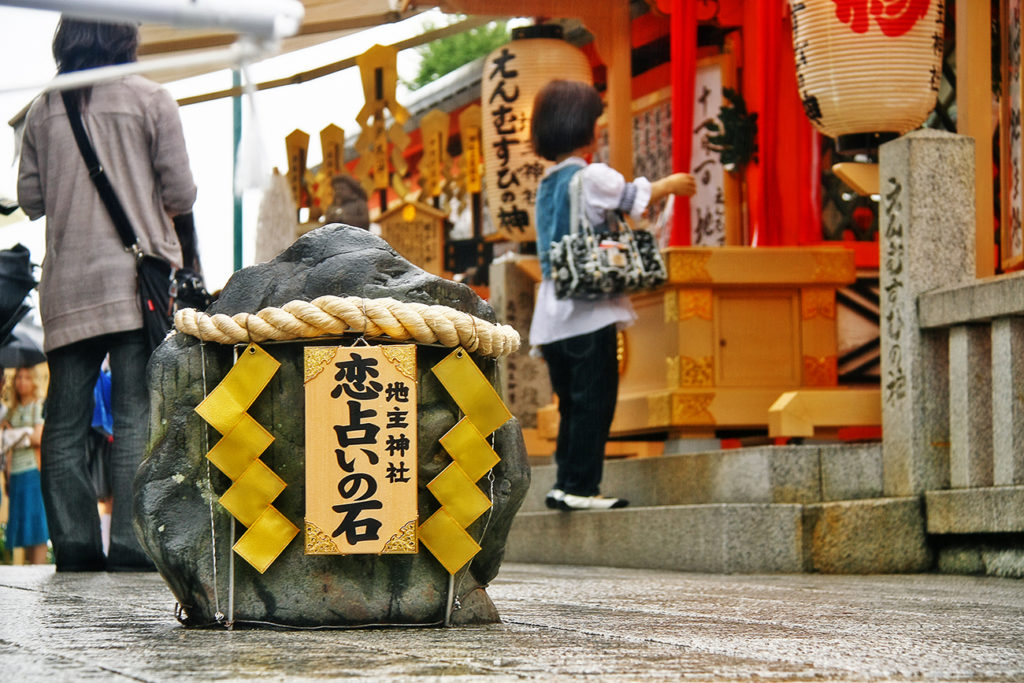
The Enchanting Kiyomizudera Temple
Kiyomizudera (清水寺, literally “Pure Water Temple“) located in eastern Kyoto, Japan, is an enchanting Buddhist temple and is one of the most celebrated in the country. The temple was founded in 780 in the wooded hills of Otowa Waterfall which it was named after. Kiyomizudera is included in the list of UNESCO world heritage sites in Japan.
Founded during the early Heian period, Kiyomizudera was owned by the Buddhist Kita-Hosso sect under Enchin Shonin, a priest from Nara. He was said to have received a vision to construct the temple right beside the Otowa spring.
A few years later, the shogun Sakanoue Tamuramaro added a large hall to the site that was reassembled from the palace of Emperor Kammu who had left Nara due to the strong influence of the Buddhists monasteries on the government there. At the time, there was a strong rivalry between Kiyomizudera and Kofukuji temples both of which had strong influences around the region.
Kiyomizudera is particularly renowned for its wooden stage jutting out from its main hall 13 meters above the hillside. The wooden stage allows visitors to enjoy the fantastic view of the many maple and cherry trees that blossom into a sea of spectacular colors each spring and fall. The city of Kyoto can also be seen in the distance. The main hall was built without using a single nail. It also houses the temple’s statue of the eleven faced, thousand armed Kannon.
Close to the wooden stage of Kiyomizudera is the historic Jishu-jinja Shrine whose founding is believed to predate the founding of Japan itself. The shrine is situated in the area known as Mt. Horai which is worshipped as a sacred mountain of perpetual youth and longevity. The shrine is known to be the guardian of Kiyomizudera Temple until the Edo period and has attracted numerous worshippers of Ubusunagami (a guardian deity of one’s birthplace) to Kiyomizu and Yasaka for quite some time.
Koiuranai-no-ishi
Jishu-jinja Shrine’s main deity is Okuninushi-no-Mikoto attracts a numerous visitors praying for marriage. In front of the inner shrine are a pair of guardian stones called “Koiuranai-no-ishi” (love fortune stones). It is believed that if people can go through the stones with their eyes closed, which are just ten centimeters apart, the shrine’s god will grant their wish of love.
The grounds of Jishu-jinja Shrine have many other places that are believed to grant other wishes such as Haraedo-sha, purify the mind and body with haraigushi (wands used in Shinto rituals), a shrine dedicated to “Nadedaikoku” where granted wishes depend on which part of the statue you stroke, “Mizukake Jizo” said to bring good luck to those throwing water on it, and “Okage Myojin” who is believed to make any wish come true only once, no matter how sinister.



